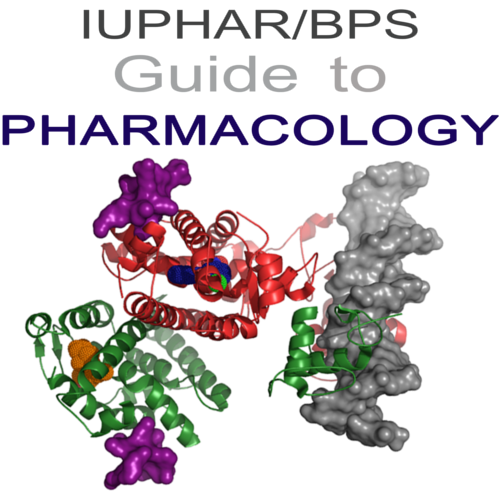Lysophospholipid (LPA) receptors in GtoPdb v.2021.3
Abstract
Lysophosphatidic acid (LPA) receptors (nomenclature as agreed by the NC-IUPHAR Subcommittee on Lysophospholipid Receptors [55, 19, 82, 129]) are activated by the endogenous phospholipid LPA. The first receptor, LPA1, was identified as ventricular zone gene-1 (vzg-1) [40], This discovery represented the beginning of the de-orphanisation of members of the endothelial differentiation gene (edg) family, as other LPA and sphingosine 1-phosphate (S1P) receptors were found. Five additional LPA receptors (LPA2,3,4,5,6) have since been identified [82] and their gene nomenclature codified for human LPAR1, LPAR2, etc. (HUGO Gene Nomenclature Committee, HGNC) and Lpar1, Lpar2, etc. for mice (Mouse Genome Informatics Database, MGI) to reflect species and receptor function of their corresponding proteins. The crystal structure of LPA1 is solved and indicates that LPA accesses the extracellular binding pocket, consistent with its proposed delivery via autotaxin [13]. These studies have also implicated cross-talk with endocannabinoids via phosphorylated intermediates that can also activate these receptors. The binding affinities to LPA1 of unlabeled, natural LPA and anandamide phosphate (AEAp) were measured using backscattering interferometry (pKd = 9) [83, 104]. Utilization of this method indicated affinities that were 77-fold lower than when measured using radioactivity-based protocols [128]. Targeted deletion of LPA receptors has clarified signalling pathways and identified physiological and pathophysiological roles. Multiple groups have independently published validation of all six LPA receptors described in these tables, and further validation was achieved using a distinct read-out via a novel TGFα "shedding* assay [48]. LPA has been proposed to be a ligand for GPR35 [94], supported by a study revealing that LPA modulates macrophage function through GPR35 [54]. However chemokine (C-X-C motif) ligand 17 (CXCL17) is reported to be a ligand for GPR35/CXCR8 [76]. Moreover, LPA has also been described as an agonist for the transient receptor potential (Trp) ion channels TRPV1 [87] and TRPA1 [58]. All of these proposed non-GPCR receptor identities require confirmation and are not currently recognized as bona fide LPA receptors.

This work is licensed under a Creative Commons Attribution-ShareAlike 4.0 International License.










